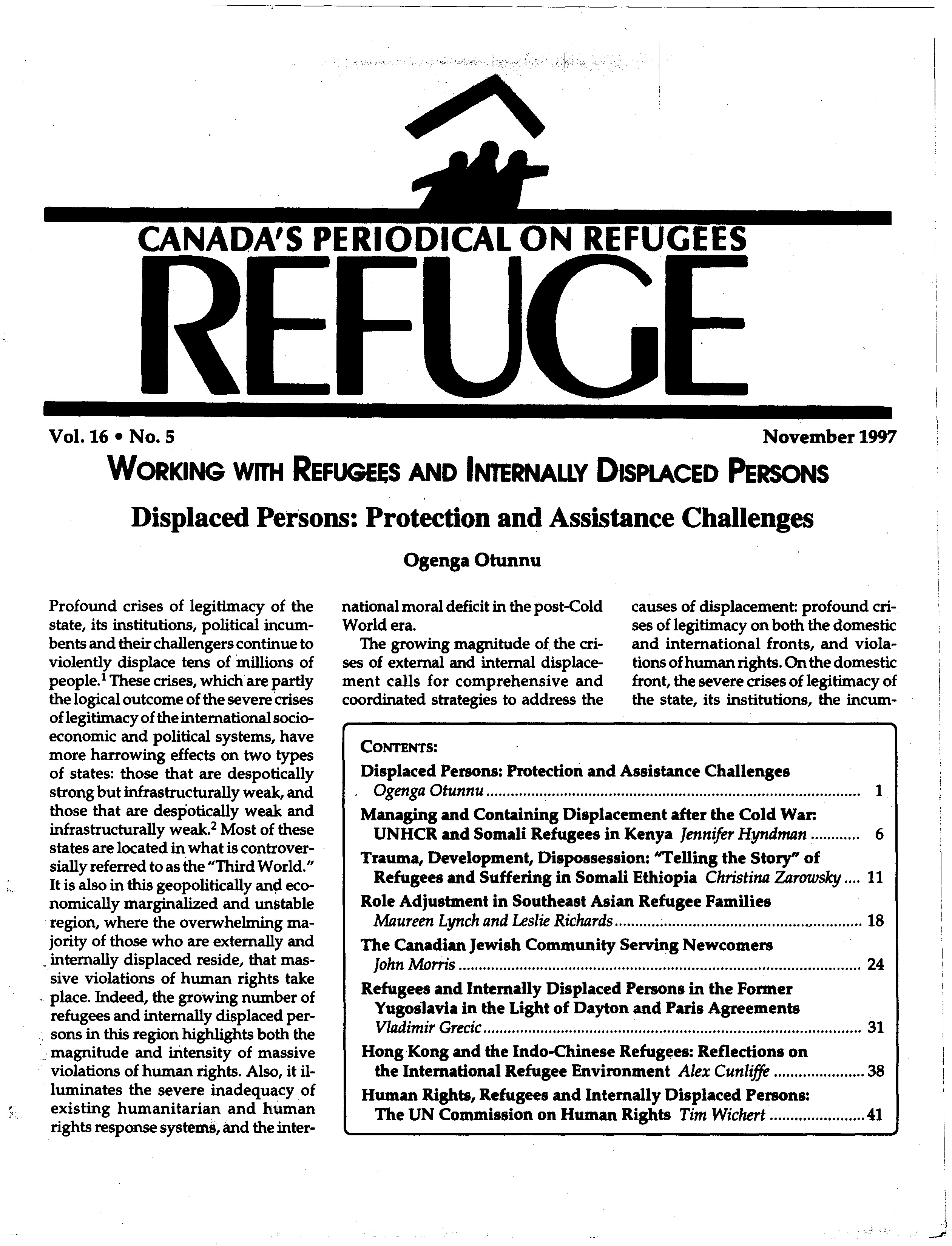Managing and Containing Displacement after the Cold War: UNHCR and Somali Refugees in Kenya
DOI:
https://doi.org/10.25071/1920-7336.21936Keywords:
Kenya, Somali refugees, UNHCR, containment, refugee camps, preventive protection, geographyAbstract
This paper argues that distinct patterns of managing human displacement have emerged since the end of the Cold War. Using the case of Somali refugees in Kenya, the author illustrates what some of these strategies are: the deployment of "preventive zones" on the Somalian side of the border; the designation of prima facie refugee status which restricts Somali refugees to camps, and the reduction of opportunities for resettlement abroad. All of these serve to regionalize displacement in camps, for the most part, without providing a sustainable solution to the social and political crisis at hand.Metrics
Downloads
Published
How to Cite
Issue
Section
License
Copyright (c) 1997 Jennifer Hyndman

This work is licensed under a Creative Commons Attribution-NonCommercial 4.0 International License.
Refuge authors retain the copyright over their work, and license it to the general public under the Creative Commons Attribution-Non Commercial License International (CC BY-NC 4.0). This license allows for non-commercial use, reproduction and adaption of the material in any medium or format, with proper attribution. For general information on Creative Commons licences, visit the Creative Commons site. For the CC BY-NC 4.0 license, review the human readable summary.







